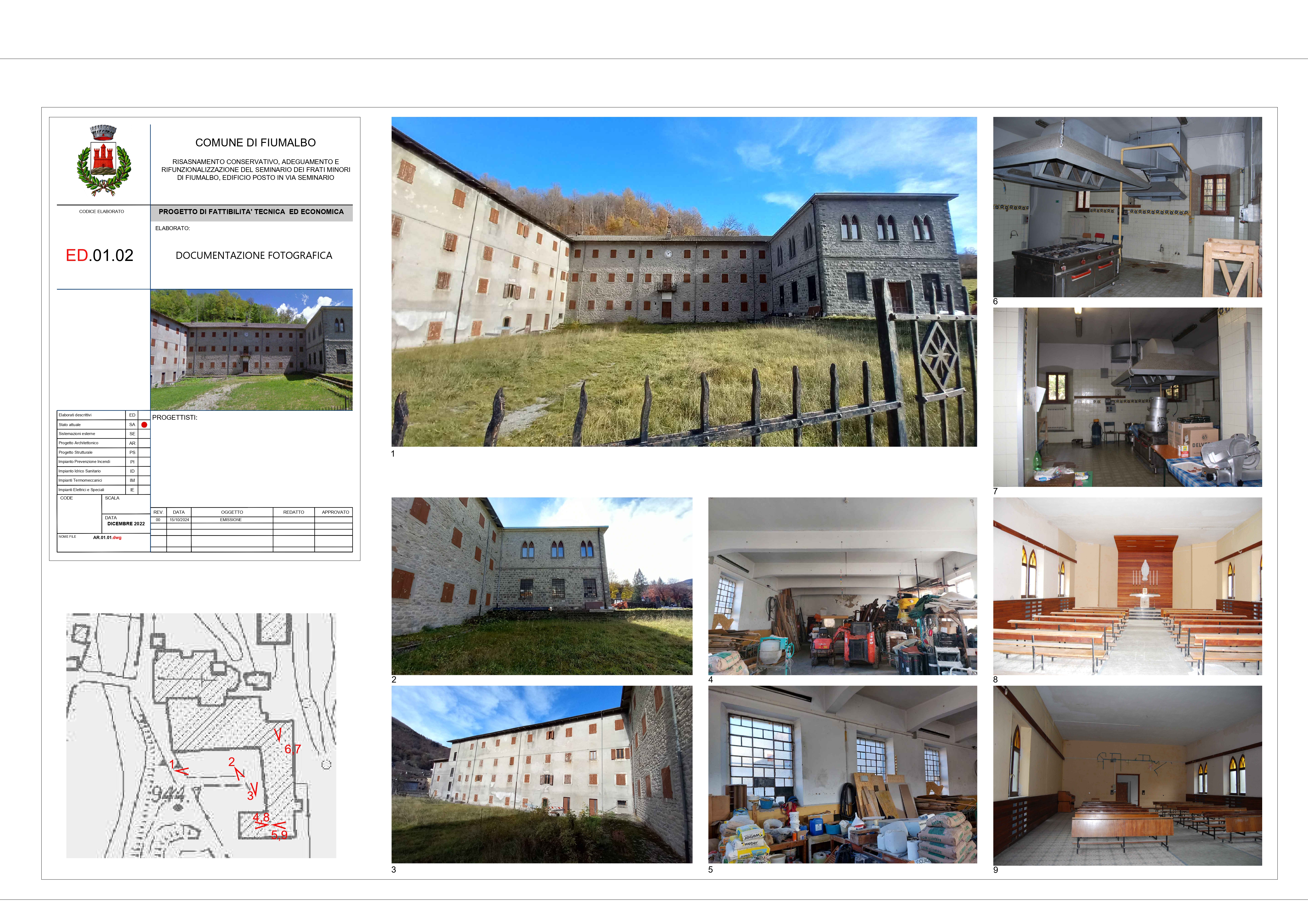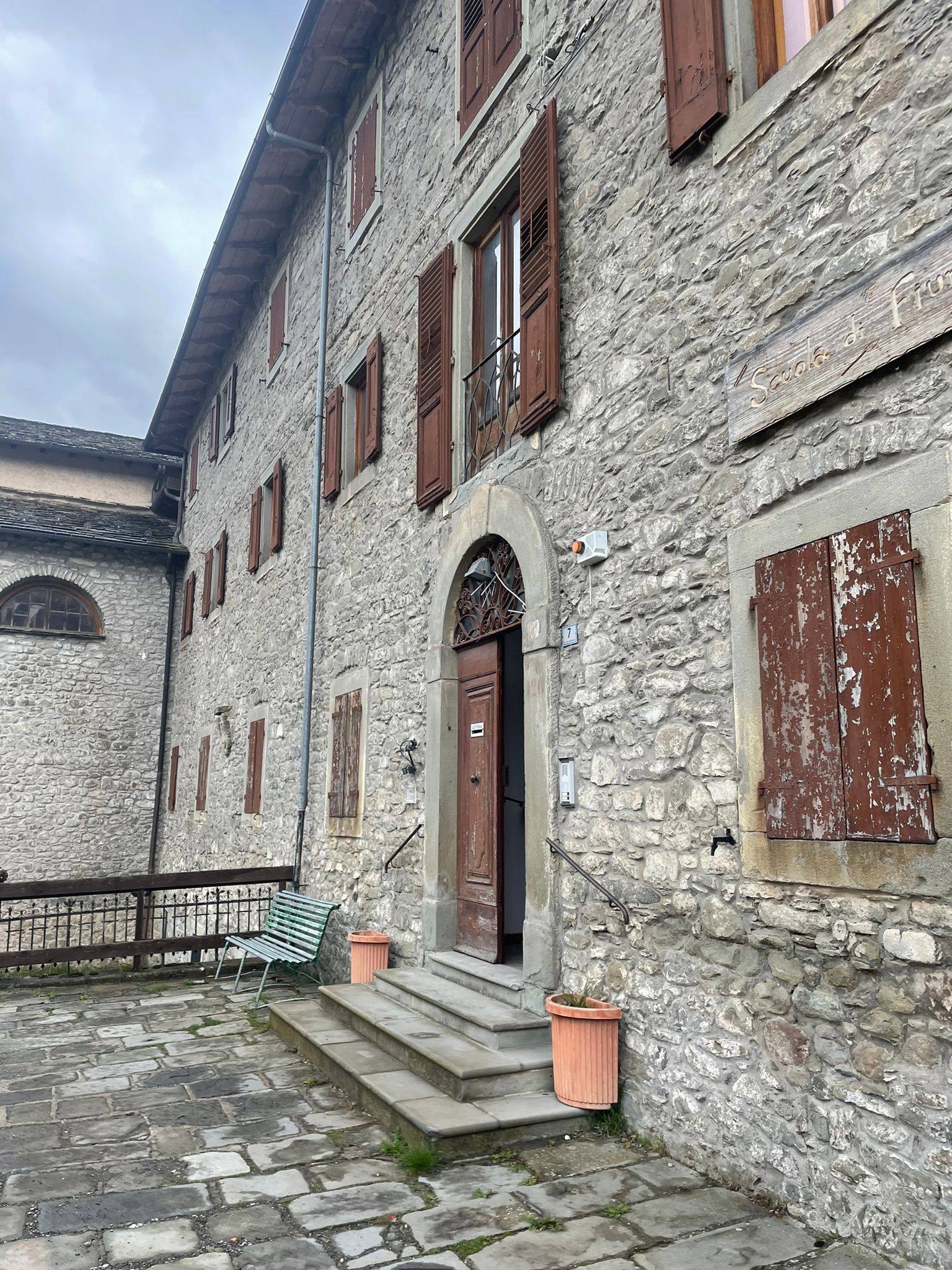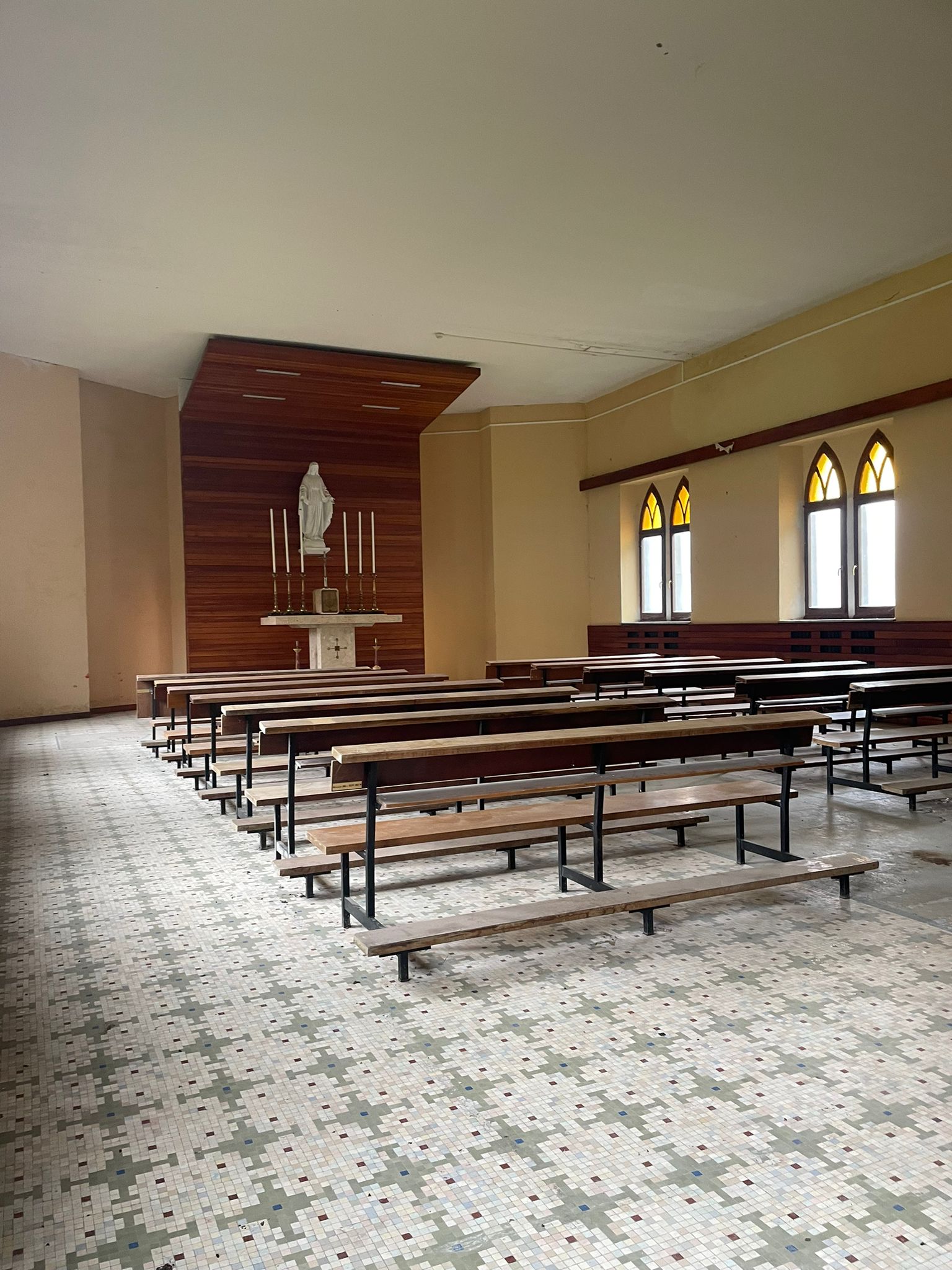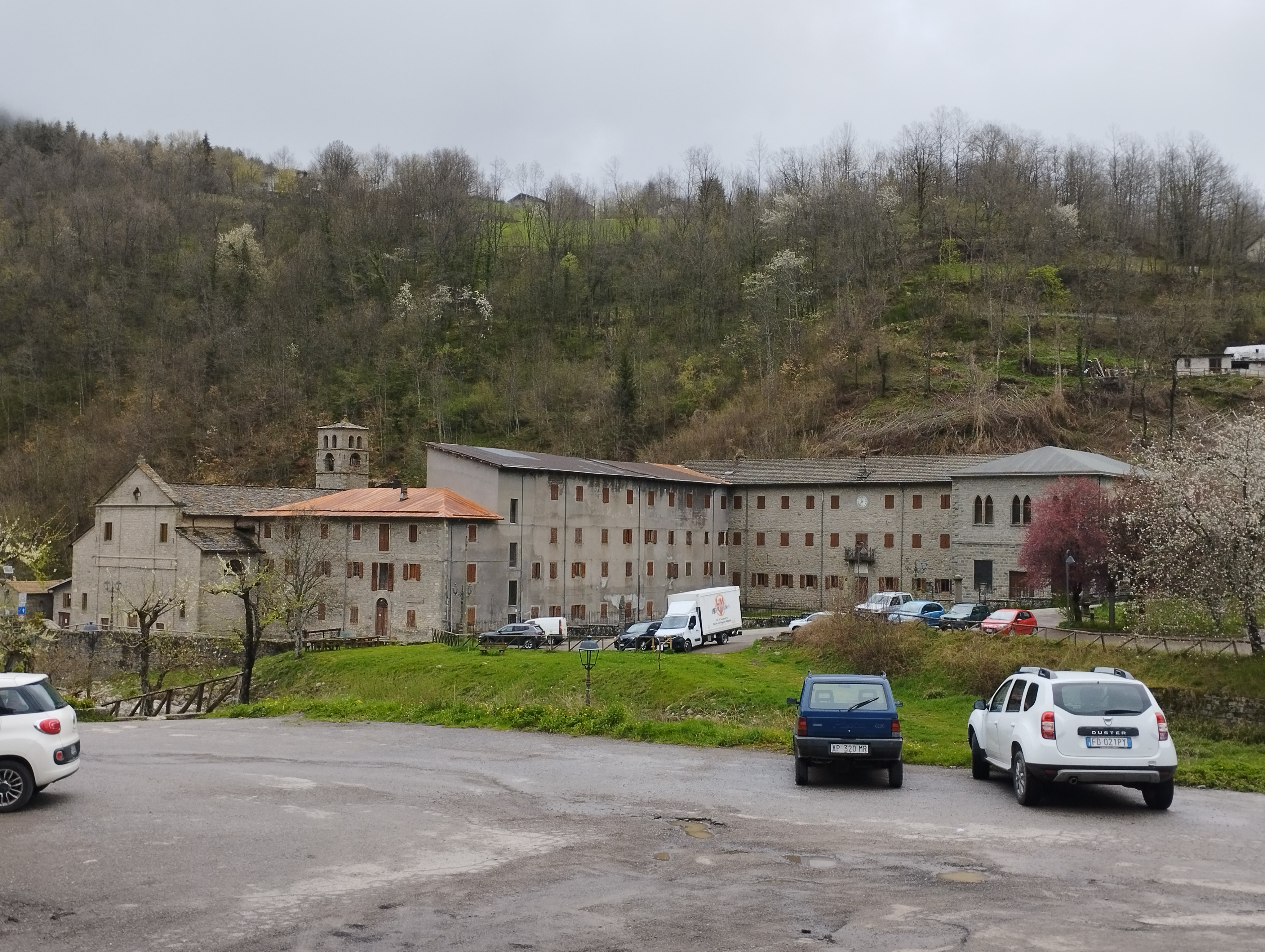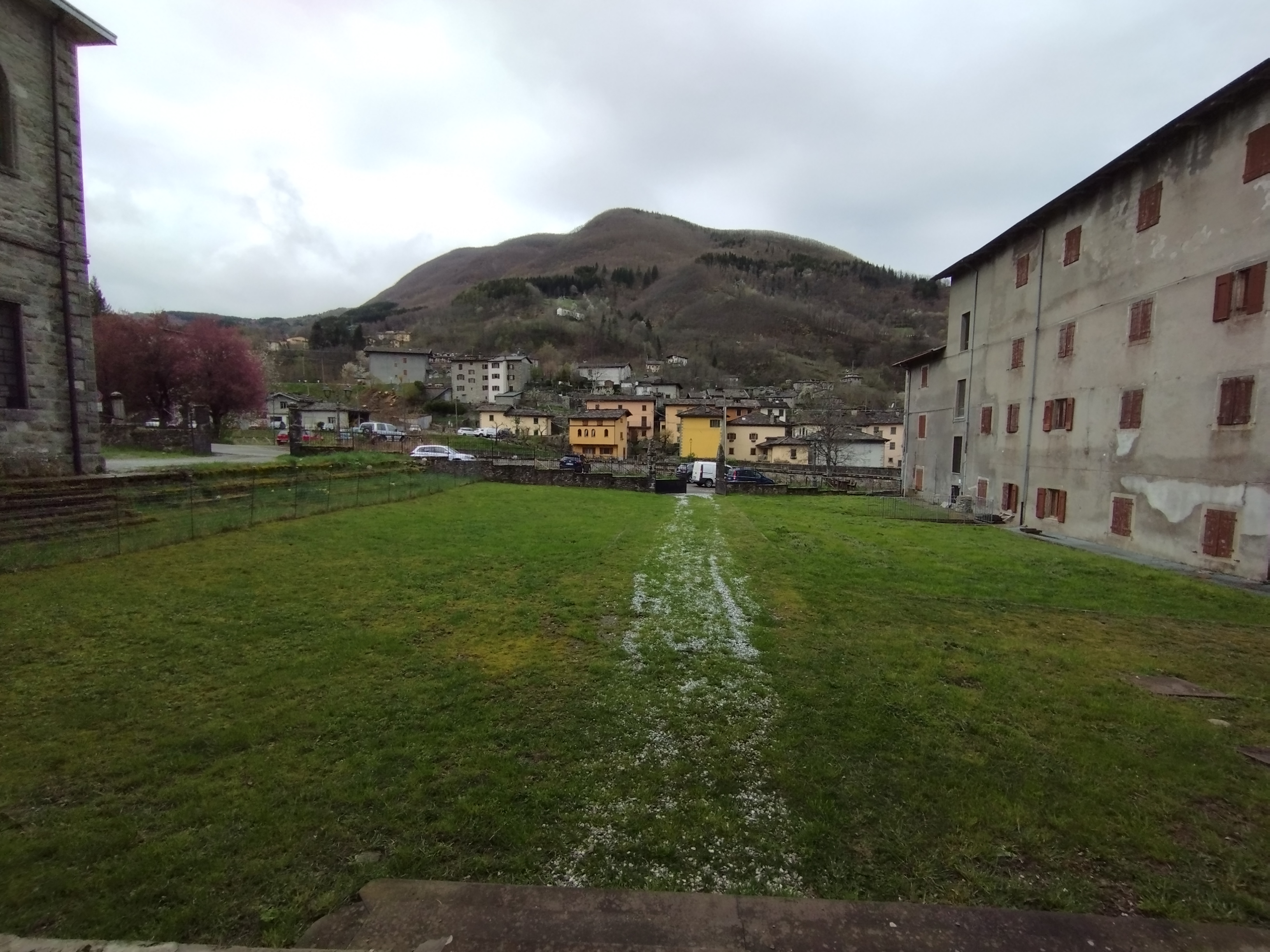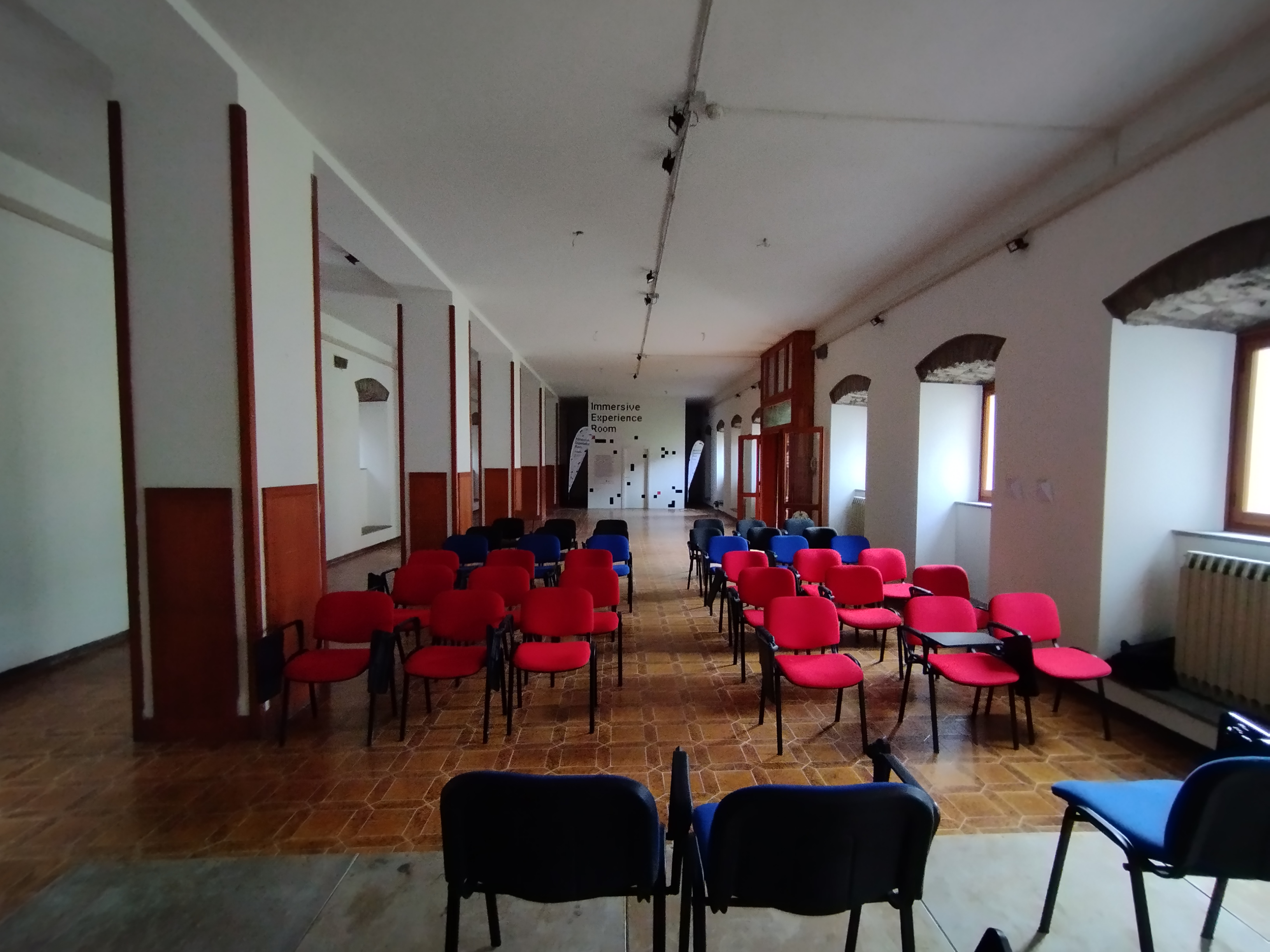Fiumalbo Plus - HERITAGE HUB
Fiumalbo Plus – HERITAGE HUB
Fiumalbo Plus – HERITAGE HUB, is a visionary model for inner area regeneration. By transforming the historic Seminario Minore di Fiumalbo into a Hub for High-Impact Education for Resilience, Innovation, Twin transition, Arts, Green solutions, and Environmental conservation, the project integrates heritage conservation, sustainability, and digital transition. The hub aims to revitalize the local economy and engage the community by blending training, cultural, and entrepreneurial initiatives.
Italy
Via Seminario, 8, 41022 Fiumalbo MO - 44.17904075134388, 10.649798791922441
Early initiative
Yes
Yes
Yes
No
No
036014: Fiumalbo (IT)
The initiative focuses on the urban, environmental, and social regeneration of the Seminario Minore of Fiumalbo, an underutilized historic site (built from the XII century onwards) in one of Italy’s distinguished mountain villages located in the Province of Modena: Fiumalbo. Despite its well-preserved heritage, Fiumalbo faces demographic decline, economic stagnation, and limited services, challenges common to inner and mountain areas. The project aims to revitalize the Seminario as a multifunctional hub driving territorial innovation and resilience. The initiative benefits local residents, improving access to services and cultural spaces, while offering educational programs for youth and professionals to develop green and digital skills. Entrepreneurs and businesses will access dedicated innovation spaces, supporting economic revitalization. The project also enhances Fiumalbo’s cultural and tourism appeal, in a sustainable perspective leveraging its historical assets. Operationally, the initiative focuses on three key objectives:
- Physical and functional regeneration, restoring and adapting spaces for education, business incubation, and cultural engagement, integrating accessibility and sustainable green solutions.
- Socio-economic development, fostering digital and green skills aligned with emerging labor market trends and supporting local youth entrepreneurship.
- Cultural and territorial enhancement, transforming the Seminario into a hub for artistic production, heritage valorization, and community engagement.
Expected outcomes include a revitalized, accessible, and energy-efficient heritage site, new employment and training opportunities, and strengthened local identity. A long-term governance model will ensure financial sustainability through public-private partnerships, aligning with European, national, and regional strategies for sustainable regeneration in fragile mountain communities.
- Physical and functional regeneration, restoring and adapting spaces for education, business incubation, and cultural engagement, integrating accessibility and sustainable green solutions.
- Socio-economic development, fostering digital and green skills aligned with emerging labor market trends and supporting local youth entrepreneurship.
- Cultural and territorial enhancement, transforming the Seminario into a hub for artistic production, heritage valorization, and community engagement.
Expected outcomes include a revitalized, accessible, and energy-efficient heritage site, new employment and training opportunities, and strengthened local identity. A long-term governance model will ensure financial sustainability through public-private partnerships, aligning with European, national, and regional strategies for sustainable regeneration in fragile mountain communities.
Heritage
Education
Twin transition
Inner areas
Community enagament
The initiative integrates sustainability across environmental, social, and economic dimensions to ensure long-term impact. It aims to reduce the environmental footprint of the Seminario Minore of Fiumalbo, foster social resilience through accessible spaces, and establish a self-sustaining economic model for territorial revitalization. Environmental sustainability is achieved through energy efficiency, resource conservation, and heritage preservation. The project prioritizes sustainable materials, adaptive reuse over demolition, and renewable energy integration. Following the Do No Significant Harm (DNSH) principle, it will incorporate Nature-Based Solutions (NBS) to enhance biodiversity and mitigate climate impacts while promoting circular economy strategies such as waste reduction and material reuse. Socially, the initiative tackles depopulation and limited service access by transforming the Seminario into a hub for education, entrepreneurship, and community engagement. The intervention ensures full accessibility through universal design principles, removing physical and digital barriers. Educational and co-working spaces will develop green and digital skills, attracting young talent and reinforcing local participation through a bottom-up governance model. Economically, the project will generate sustainable revenue through training programs, business incubation, cultural events, and professional residencies. A public-private governance model will oversee financial sustainability, attracting investments to strengthen local economies while aligning with regional development strategies.
As a model for rural regeneration, this initiative demonstrates how historic sites can drive climate action, inclusion, and economic renewal, aligning with European priorities on sustainability, digital transition, and territorial cohesion.
As a model for rural regeneration, this initiative demonstrates how historic sites can drive climate action, inclusion, and economic renewal, aligning with European priorities on sustainability, digital transition, and territorial cohesion.
The initiative prioritizes aesthetic excellence and experiential quality, ensuring that the HERITAGE Hub enhances cultural and sensory engagement while adhering to principles of sustainability and functional adaptability. The project is committed to preserving the historic character of the site while fostering a harmonious integration with the surrounding landscape, thereby promoting well-being, inclusivity, and creative expression. The architectural strategy is grounded in conservation and adaptive reuse principles, maintaining original structural elements such as stone masonry, wooden fixtures, and decorative features while introducing contemporary interventions that enhance functionality without compromising heritage integrity. The design follows universal accessibility standards, incorporating barrier-free circulation, and intuitive wayfinding solutions. The integration of shared spaces, including reading rooms, exhibition areas, and landscaped courtyards, facilitates community participation and cultural exchange. Furthermore,the HERITAGE Hub has a strong sensory enhancement,since it is located in a UNESCO site and it is close to the Scoltenna river in Latin times called Flumen Album, ENG White River, from which Fiumalbo derives. The Seminario is conceived as a dynamic cultural hub, hosting artistic residencies, exhibitions, and interdisciplinary workshops that simultaneously honor regional traditions and foster innovation. This initiative represents a best practice in heritage-led urban and rural revitalization, demonstrating how historic sites can be transformed into multifunctional, inclusive cultural landmarks. By integrating architectural authenticity, human-centered design, and multisensory engagement, the project aligns with European strategies for cultural sustainability, place-making, and territorial cohesion, offering a replicable framework for heritage-sensitive development in rural and marginal areas.
The initiative places inclusion at the core of its design and implementation, ensuring that the Seminario Minore of Fiumalbo becomes a fully accessible, affordable, and participatory space that fosters social cohesion and equal opportunities. The project adopts a multidimensional approach to inclusion, encompassing accessibility for people with disabilities, affordability for diverse socio-economic groups, participatory governance, and new models of social engagement tailored to the specific needs of mountain communities.
From a physical accessibility perspective, the project eliminates barriers and facilitates navigation for all users. This includes the implementation of ramps and elevators that ensure full mobility within the structure. The external areas are designed to be equally inclusive, offering green spaces that promote social interaction among diverse groups. In terms of affordability, the initiative ensures that the spaces within the Seminario are economically accessible to a broad spectrum of users. The co-working areas, and educational facilities will be made available at reduced or no cost for local residents, students, and startups, thereby fostering entrepreneurship and skills development without financial barriers. Cultural and community events will be programmed with free or subsidized access, ensuring that cultural participation is not limited by economic means. The initiative is also exemplary in its approach to inclusive governance, engaging diverse stakeholders—including local residents, businesses, public institutions, and civil society organizations—in decision-making processes. Through participatory co-design sessions, the local community has been actively involved in shaping the functions and activities of the revitalized Seminario, ensuring that the space reflects real needs and aspirations. This governance model promotes long-term sustainability, as local actors share responsibility in managing and activating the space.
From a physical accessibility perspective, the project eliminates barriers and facilitates navigation for all users. This includes the implementation of ramps and elevators that ensure full mobility within the structure. The external areas are designed to be equally inclusive, offering green spaces that promote social interaction among diverse groups. In terms of affordability, the initiative ensures that the spaces within the Seminario are economically accessible to a broad spectrum of users. The co-working areas, and educational facilities will be made available at reduced or no cost for local residents, students, and startups, thereby fostering entrepreneurship and skills development without financial barriers. Cultural and community events will be programmed with free or subsidized access, ensuring that cultural participation is not limited by economic means. The initiative is also exemplary in its approach to inclusive governance, engaging diverse stakeholders—including local residents, businesses, public institutions, and civil society organizations—in decision-making processes. Through participatory co-design sessions, the local community has been actively involved in shaping the functions and activities of the revitalized Seminario, ensuring that the space reflects real needs and aspirations. This governance model promotes long-term sustainability, as local actors share responsibility in managing and activating the space.
The initiative is rooted in citizen engagement and participatory governance, ensuring that the HERITAGE Hub is developed in alignment with the needs and aspirations of the local community. From its inception, the project has incorporated inclusive consultation processes, allowing residents, civil society organizations, and local stakeholders to actively shape the vision, functions, and governance of the revitalized space. This participatory methodology has led to the identification of key functions—such as educational spaces, business incubators, and cultural venues—that directly address socio-economic challenges in the area. Civil society organizations have played a crucial role in shaping the initiative, contributing expertise in social inclusion, cultural heritage, and economic development. Partnerships with local associations, and business networks have strengthened the project’s capacity to deliver training programs, support entrepreneurship, and promote cultural initiatives. Schools and universities have also been involved to integrate educational pathways, ensuring that the space remains a hub for knowledge exchange and lifelong learning. The impact of this broad civic engagement is twofold. First, it has increased social acceptance and ownership of the project, fostering a sense of shared responsibility for its success. By involving citizens in the decision-making process, the initiative ensures long-term community stewardship, preventing underuse or misalignment with local priorities. Second, the participation of diverse stakeholders has enhanced the quality and relevance of the initiative, ensuring that it remains dynamic, inclusive, and adaptable to future needs. This approach serves as an exemplary model for participatory urban regeneration, demonstrating how civic engagement can transform heritage sites into vibrant, multifunctional spaces while contributing to the broader objectives of social cohesion and sustainable development.
This integrated collaboration of multi-level authorities strengthens the project’s capacity to deliver sustainable urban regeneration, social inclusion, and economic revitalization. At the local level, the Municipality of Fiumalbo has led the initiative, facilitating participatory planning processes with residents, businesses, and civil society organizations. Public consultations, co-design workshops, and stakeholder meetings have shaped the functions of the revitalized Seminario Minore, ensuring it meets community needs. Schools, training institutions, and local businesses are contributing to defining the educational, entrepreneurial, and cultural programs, fostering local skills development and economic diversification. At the inter-municipal level, the Union of the Frignano plays a key role in ensuring a coordinated approach to tackling depopulation, brain drain, economic stagnation, social inclusion, and sustainable development. The project aligns with the Appennino Plus policy strategy, a shared territorial development framework aimed at fostering innovation, youth retention, and economic revitalization in the area. The Union’s involvement facilitates cross-municipal synergies, supporting integrated service delivery, infrastructure improvements, and inter-institutional cooperation to enhance regional attractiveness and resilience. At the regional, national and european level, the initiative aligns with strategies for inner areas and cultural heritage enhancement, leveraging policy frameworks that promote territorial cohesion, economic resilience, and social inclusion. Public funding mechanisms and regulatory support have facilitated the implementation of heritage conservation, accessibility improvements, and governance models for sustainable management. At the European level, further engagement with European networks, policy platforms, and funding programs can make the project a replicable best practice for rural and heritage-led regeneration across Europe.
The initiative integrates a multidisciplinary approach, combining expertise from architecture, urban planning, social sciences, economics, environmental sustainability, and cultural heritage management to ensure a holistic and impactful regeneration of the Seminario Minore of Fiumalbo. The project is structured around an ongoing participatory process developed in accordance with regional laws (L.R. 15/2018), ensuring a bottom-up approach that actively involves citizens, institutions, and key stakeholders. The University of Modena and Reggio Emilia (UNIMORE) plays a central role in shaping the strategic vision of the project, conducting research and stakeholder engagement activities to identify innovative functions that the Seminario could host. Through collaboration with experts in territorial development, social innovation, and entrepreneurship, the initiative has defined key thematic areas such as digital and green skills training, business incubation, and community-based cultural activities, ensuring alignment with regional and European strategic priorities. The involvement of local businesses and industry associations has ensured that the initiative fosters economic resilience, providing training and incubation spaces tailored to local workforce needs. Public institutions at local and regional levels have contributed by aligning the project with territorial development policies and securing financial resources. Third-sector organizations ensure accessibility, community engagement, and participatory governance. This multidisciplinary and multi-stakeholder approach has generated significant added value by enhancing the project’s relevance, feasibility, and long-term impact. The collaboration between different knowledge fields has facilitated an integrated vision that balances architectural conservation, economic sustainability, and social inclusion, making the Seminario Minore a model for participatory heritage regeneration in rural and mountain areas.
Unlike mainstream urban regeneration projects that focus on cities or well-connected rural hubs, this initiative demonstrates a pioneering model for investment in fragile, underdeveloped territories, addressing challenges that are structural rather than sectoral. Fiumalbo is classified as an extra-peripheral and inner area. shrinkage, aging demographics, limited private investment, and a strong dependency on climate-sensitive sectors such as tourism and agriculture. These factors make traditional development models ineffective, requiring a systemic intervention that integrates economic, social, and environmental resilience. Investing in such areas is not only an urgent necessity for local communities but is also a strategic action in line with EU policies to rebalance economic and social development across the continent, particularly in regions with structural disadvantages. This initiative represents a paradigm shift by creating a multifunctional hub for education, entrepreneurship, and cultural activation, ensuring access to training, business incubation, and social innovation services that are otherwise unavailable in the area. Instead of relying on centralized service provision in urban centers, the project fosters a decentralized and distributed model of territorial development, leveraging digital tools, shared governance, and local expertise. Additionally, the project aligns with the EU Green Deal, New European Bauhaus, and territorial cohesion frameworks, ensuring that investments are sustainable, inclusive, and adaptable to the specific conditions of mountain and rural environments. By demonstrating that strategic, high-impact investments can be successfully implemented in extra-peripheral territories, this initiative serves as a replicable model for other inner areas across Europe.
The regeneration process is structured in a way that transforms public investment into a catalyst for long-term economic sustainability, positioning the Seminario Minore of Fiumalbo as a self-sustaining social innovation hub. The process begins with a bottom-up participatory phase, in which residents, local enterprises, civil society organizations, and institutional stakeholders contribute to shaping the vision of the project. Following this participatory process, the Municipality of Fiumalbo, as the main coordinating body, took on the responsibility of securing public funding, positioning the initiative within a broader strategic framework. The project is designed to align with regional, national, and European funding instruments, ensuring coherence with territorial development policies, urban regeneration programs, and EU cohesion strategies. The municipality’s role is not only to mobilize financial resources but also to structure a governance model that enables multi-stakeholder collaboration and long-term sustainability. Public funding is conceived as a social start-up investment, providing the initial infrastructure, restoration, and operational framework necessary to activate the Seminario as a dynamic, multifunctional space. Unlike traditional public-led regeneration projects, this initiative is structured to gradually attract private investments, leveraging the enhanced attractiveness of the revitalized space to stimulate entrepreneurial activity, knowledge-based industries, and cultural programming. The business plan envisions a mixed-use model, combining education and training programs, co-working and business incubation services, cultural events, and hospitality offerings to generate diversified revenue streams. This hybrid financial model ensures that public investment lays the foundation for a self-sustaining economic ecosystem, where private sector engagement, community participation, and institutional support converge to foster long-term development.
One of the key elements of replicability is the initiative’s alignment with Appennino Plus, a territorial strategy developed by the Union of the Frignano Municipalities to create a network of high-level hubs across inner areas. This coordinated approach ensures that multiple municipalities share best practices, resources, and policy frameworks, addressing common challenges such as brain drain, youth unemployment, business fragility, and climate vulnerability. By structuring the HERITAGE Hub as a pilot project, the initiative provides a scalable blueprint that can be replicated in other locations, fostering economic diversification, social innovation, and sustainable territorial development. The methodology—which starts with a bottom-up participatory process, followed by strategic public investment to attract private sector engagement—is particularly transferable. Other municipalities can adopt the same co-design approach, ensuring that projects reflect local needs while integrating into broader policy and funding frameworks. Additionally, the initiative’s multi-stakeholder governance model, which involves public authorities, universities, businesses, and civil society, can serve as a template for collaborative development. From a technical perspective, the adaptive reuse model applied to the Seminario can be implemented in other historical buildings, particularly those in underutilized rural or mountain settings. The business model can also be tailored to different territorial contexts, ensuring financial sustainability and long-term impact. By integrating policy-driven investment with market-oriented strategies, the initiative demonstrates how inner areas can transition from dependency on public funding to self-sustaining economic ecosystems. Its scalability within the Appennino Plus framework positions it as a leading example of innovative territorial regeneration in rural and inner areas across Europe.
The initiative provides local solutions to global challenges, addressing people, planet, prosperity, and partnerships, in line with European policy objectives. In Priority Area 1: People, the project strengthens education and skills, creating a multifunctional hub for training aligned with green and digital transitions. By fostering lifelong learning, vocational training, and entrepreneurship, it combats brain drain and youth outmigration while ensuring decent work, social inclusion, and gender equality. Additionally, it leverages culture as an economic driver, preserving architectural heritage and repurposing it for community and creative industries. In Priority Area 2: Planet, the initiative addresses climate change and disaster risk by prioritizing adaptive reuse over new construction, minimizing resource consumption and preserving embodied energy. It integrates sustainable energy solutions to create a low-carbon infrastructure while promoting green skills to support local workforce transitions. The project also enhances mountain community resilience to risks like extreme weather, biodiversity loss, and economic shifts in tourism and agriculture. In Priority Area 3: Prosperity, the initiative improves investment conditions, using public funding as a catalyst for a self-sustaining economic ecosystem. By attracting private sector engagement, it fosters decent work, entrepreneurship, and job opportunities, particularly for youth and women. It also integrates circular economy principles, ensuring that the Seminario Minore becomes a model for sustainable heritage-led regeneration. In Priority Area 4: Partnerships, the initiative demonstrates how local authorities can lead territorial regeneration through a multi-stakeholder governance model. It aligns with Appennino Plus, promoting inter-municipal cooperation to tackle demographic decline and economic stagnation.
The HERITAGE Hub serves as a testing ground for the long-term vision of transforming the Seminario into a regional hub for education, innovation, and social engagement. By activating part of the building before full-scale regeneration, the initiative follows an incremental approach, allowing for scaling, evaluation, and refinement of its functions. The next steps will expand the project’s impact, aligning with New European Bauhaus (NEB) values of sustainability, inclusivity, and aesthetics. The first milestone is the formalization of financial support from the Emilia-Romagna Region for a multifunctional space, serving as a flexible venue for cultural and social activities. Efforts are also underway to secure funding for two-thirds of the remaining rooms and halls, which will be repurposed for long-term educational programs, workshops, and short-term stays for professionals. These spaces will support lifelong learning and economic revitalization, ensuring each intervention responds to local needs while respecting the site's heritage. To ensure long-term sustainability, the Municipality is expanding partnerships with private entities, securing investments for infrastructure and management. This step transitions the project from public funding to a self-sustaining economic model, engaging businesses, research institutions, and cultural organizations in shaping the Hub’s future. The next steps include:
- Expanding activities in the existing space, refining governance models.
- Launching the multifunctional space renovation, enhancing cultural and community participation.
- Finalizing funding for residential spaces to support education and innovation.
- Formalizing public-private partnerships to strengthen financial sustainability.
By following this phased approach, the initiative exemplifies NEB’s vision of sustainable, inclusive, and beautiful spaces, offering a replicable model for heritage-led regeneration in Europe's most structurally disadvantaged areas.
- Expanding activities in the existing space, refining governance models.
- Launching the multifunctional space renovation, enhancing cultural and community participation.
- Finalizing funding for residential spaces to support education and innovation.
- Formalizing public-private partnerships to strengthen financial sustainability.
By following this phased approach, the initiative exemplifies NEB’s vision of sustainable, inclusive, and beautiful spaces, offering a replicable model for heritage-led regeneration in Europe's most structurally disadvantaged areas.

